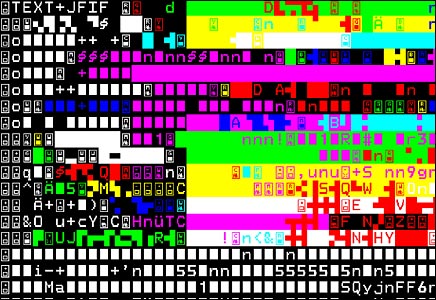
Refreshingly simple in concept and execution, the most prominent work of Roch Forowicz, "looking," is just that. In 2006, the young Polish artist set up a video camera outside the window of his home apartment and consequently set up the online project which broadcasted the content he caught on film. The material is organized into what the artist calls "parts," including 7 in all; they are medium- to low-quality documentations of situations occurring outside what the artist insists is the same window, each lasting several minutes in length. They have titles of what seems to be the main "point" or situation within the film clip. The scenes are relatively monotonous and grow a bit boring for the average viewer, but they surely were chosen for their intrigue, being out-of-the-ordinary situations (such as "Death in the city," the first part, which includes police officers hovering over a body of a man laying on the ground) or being strangely personal and almost intrusive (such as "Classic Bench," the fifth part, which documents two men sitting on a bench, conversing and commenting on things and characters that pass them by). In the artist statement on the website, Forowicz assures the visitor that this site was not intended to be voyeuristic (not about "crime [or] love"), but the power of simple observation to appreciate the "drama" occurring in ordinary life, particularly when we take for granted fabricated dramas to bring us entertainment.
I realized that the majority of my impatience when observing Forowicz's work likely stemmed from the fact that I was expecting the fabricated sort of drama. I was attuned to constant thrills and exciting details that were made available to me through a screen, with characters that were knowable and change rapid enough to demand (not just politely suggest) my attention. I was hardly even willing to look at a potential crime scene with a (likely) dead body laying on the ground for the monotony!-- surely this was not a problem with the content presented, but my conditioned patience. If the contrast was what Forowicz intended to become painfully clear in "looking," he achieved it.
I feel strongly that "looking" is successful on other fronts in a wonderfully fresh, plain way in comparison to other artists who attempt the same feat of naturalistic observation. Vito Acconci in his early projects of following people with a camera seemed more to be bringing more attention to his own strangeness, the ridiculousness of his actions with any message he wanted to make about publicity of appearance somewhat brushed over. Forowicz doesn't intend to decorate his observation with unacceptability in his actions. He observes, and allows others to observe by placing his findings on the most accessible source known to us currently, the internet. He advertised himself with fliers, as well, so his website might get better publicized. In this light, his objectives for this project are refreshingly simple: he wanted to make the private public and the transitory frozen and duplicated. It is effective as a haiku and, given the patience, quite satisfying.



